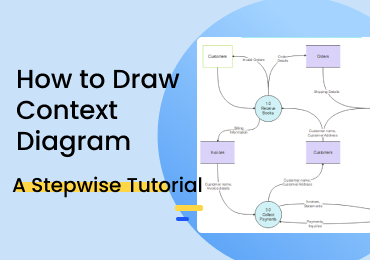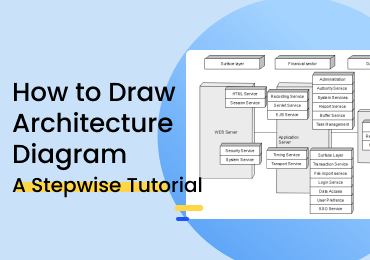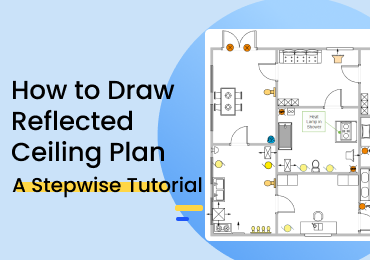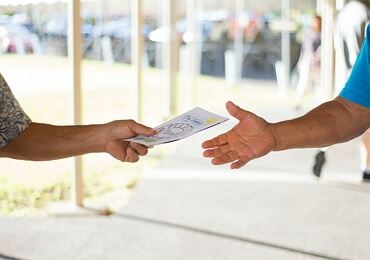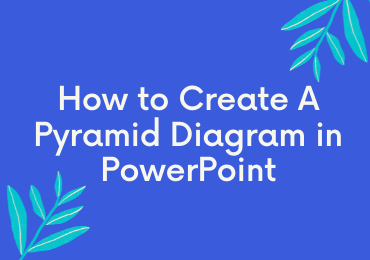How to Make an Ecomap
1. Introduction
Ecomaps, in essence, can be defined as tools that show which people are associated with a certain individual, and what sort of relationship the latter has with them. Ecomaps show a network of relationships that surround a certain individual, and in doing so, they help the observer to realize the context or circumstances that the said individual lives in. Ecomaps are also used for whole families and not just lone persons. Find more ecomap examples.
In this guide, you will learn how to make an ecomap using EdrawMax, as well as some base concepts that will help you get your head around the idea of ecomaps better.
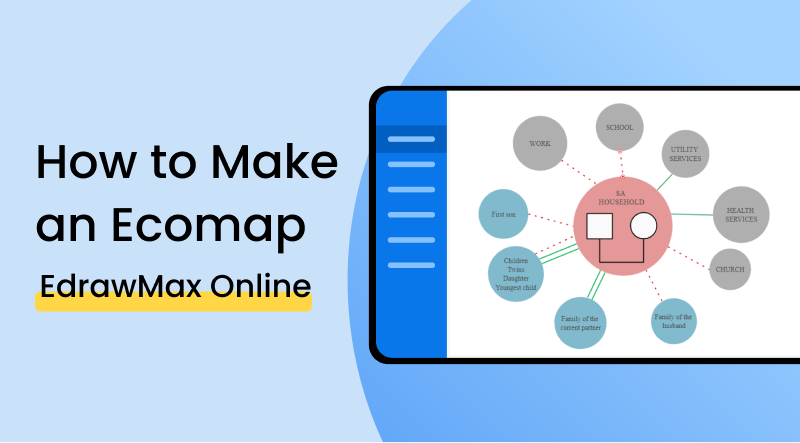
2. Understand How to Create an Ecomap
Here are some points and factors that you should understand and be mindful of before creating an Ecomap to make sure that your end drawing is professional and easily readable.
1. Placement of influencing factors in the Ecomap
When making an ecomap, the placement of the effecting parties or factors is not done haphazardly. The contacts and influencing parties are categorized into three types. This classification is done on the basis of the frequency in which they (the factors) come in contact with the individual or family.
These three types include informal, formal, and intermediate. Informal connections are to be placed at the top of the drawing. These consist of family and friends etc. The formal connections are to be placed at the bottom, and they consist of people like doctors, lawyers and therapists etcetera. Intermediate factors consist of environments such as work, and they are to be placed at the sides.
2. Relationship Lines
Understanding relationship lines are also essential when making an ecomap. Relationship lines basically indicate the level of contact or the type of dynamics that exist between the individual/family and the effecting factor.
For example, you may use a bold, thick line to show a strong connection. A dotted line may be used to show a weak connection while a line marked with crosses can depict a stressful relationship. By using various types of lines, you can symbolize and show the nature of the existing relationships.
3. Shapes and figures
In order to make sure your Ecomap is neat and organized, it is advisable to code the included elements using shapes. For example, the ecomap includes a circle in the center which depicts the family. In this circle, the family members can be shown using squares and circles. The squares can be used to show males while the circles can be used to show the females. This sort of coding can make your overall diagram look organized and succinct.
3. How to Create an Ecomap?
Now that we have understood some basic stuff about ecomaps, let us look at how you can actually draw one using EdrawMax Online. Here are the steps that you need to follow:
The first step that you need to take is to sign up on EdrawMax Online. When signing up, some details such as your name, email address, and password are required. If you are already a member, then simply log in and you are good to go.
On the homepage, you will see some menus on the left-hand side of the screen. Click on 'New' on the left-most menu and you will get an expanded window with different categories and sub-categories. Scroll down and choose 'Science'. In the 'Science' section, click on Genogram and then select ‘Blank Drawing’ which is the ‘+’ sign. This will take you to the blank template.
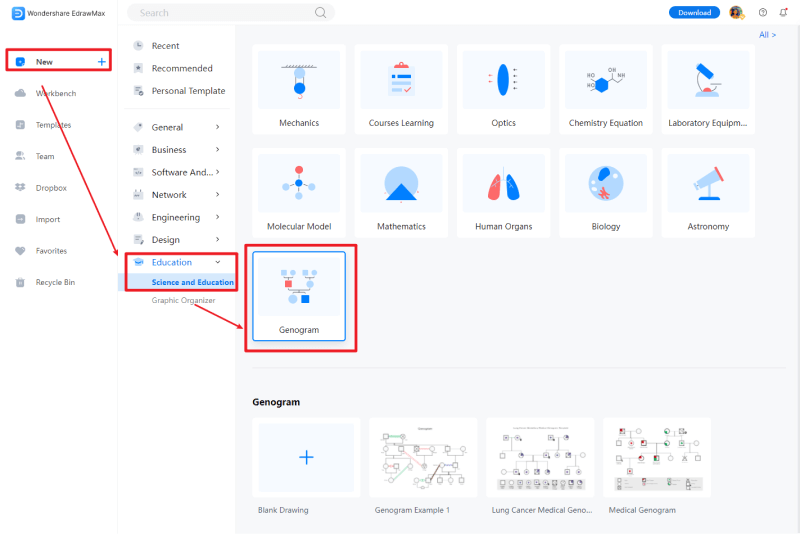
Once you are at the blank drawing, you can select symbols and shapes from the library (the menu on the left) and put them on the canvas. By clicking and holding the symbols, you can drag them to your desired location.

You can also style your drawing by using the drawing tools given in the toolbar at the top. There are various functions such as line filling, text, line style, and arrowhead styles that you can use.
If you don’t know how to make an ecomap properly, you can opt to use existing templates to save time and to make your diagrams look professional. This is an example of a template that you can use instantly on EdrawMax:
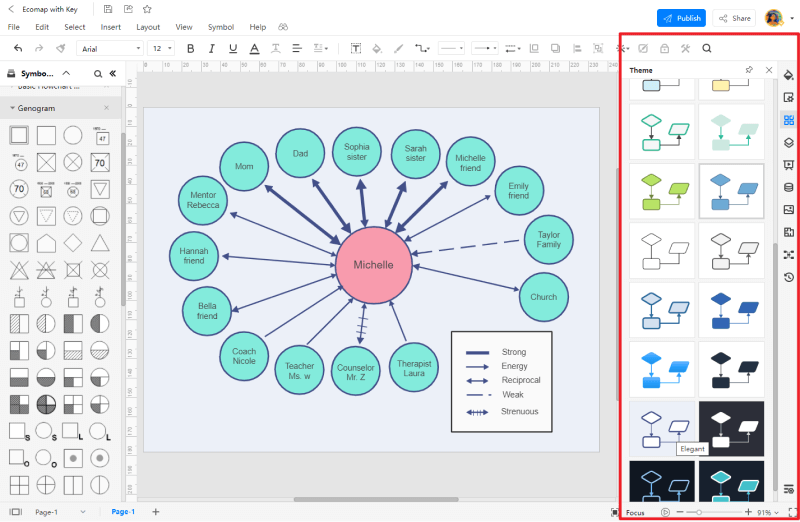
Once you are done with making your ecomap, you can save it by exporting it to the format of your choice.
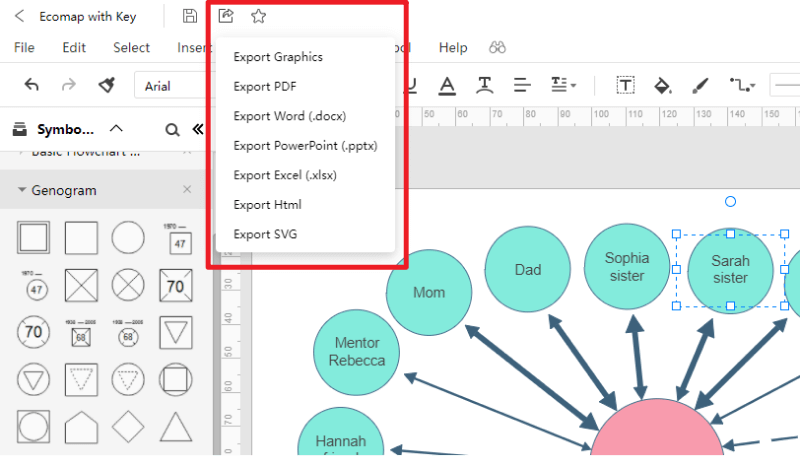
You can choose to save your drawing in PDF format, Word file format, PowerPoint file format, or as an Excel sheet.
4. Expert Tips for Creating Ecomap
Tip 1: Sample questions to ask to find connections
When making an ecomap, establishing the connections of a certain person or family is the first and foremost step. In order to properly find out the connections, there are some questions that you can ask such as:
- Who is important in your life?
- Who do you spend the most time with?
- What is your source of income?
By asking these types of questions, you can establish exactly what the connections are and how strong those connections are.
Tip 2: Make a legend for the relationship lines
For different diagrams and drawings, the status of the relationship may be conveyed differently using the relationship lines. That means that in some drawings, a dotted line may show a weak relationship while in others, it may be denoted by a single line.
Therefore, making a key or a legend is necessary so that the reader can peruse your drawing easily.
Tip 3: Color-coding types of relationships
We discussed that there are different types of relationships that are enumerated in an ecomap. Some are formal, others are informal and some are basically just environments that affect the person/family. When making an ecomap, you can color-code the formal relationships one way and the informal ones another way. This can make your drawing even more professional and easy to read. However, take care to explain the color codes in the legend/key.
5. FAQs About Creating Ecomap
What should be included in an Ecomap?
An ecomap should have the individual/family in the center of the drawing. The relationships, environments, and external factors should be placed in a circle around the subject with relationship lines depicting the strength of the bonds.
In summation, the elements that should be included in an ecomap are the subject, the external factors, and the relationship lines.
Why is the ecomap an important tool?
Ecomaps are important due to the fact that they can show what sort of relationships exist for an individual/family and how strong each of those relationships are. By using ecomaps, the reader can establish the dynamics of a family and understand the circumstances in which they are living. Ecomaps are useful for social workers, therapists, and psychologists as they give an idea of how the relationships are impacting the subject.
What is an ecomap in social work?
In social work, an ecomap shows the relationships of an individual on a personal and social level. By understanding the types of relationships as well as their strength, social workers can evaluate the mental state of the subject, and take appropriate steps for engagement. This is an example where a social worker is directly engaged with a certain person or family.
6. Key Takeaways
- Ecomaps are useful tools that can be used to describe the various relationships of an individual. These relationships can be useful for social workers and psychologists when they wish to evaluate the circumstances or context in which the subject is living
- Ecomaps can also be used to categorize the different relationships of the subject. They can also be used to show the strength of each individual relationship.
In this guide, we looked at some basic concepts about ecomaps and a stepwise tutorial on how to make an ecomap using EdrawMax.
Using EdrawMax Online, you can come up with professional-looking ecomaps. You can either make one from scratch or use a template to save time and effort. With the simple drag-and-drop method and the customization tools, EdrawMax Online is a great platform for creating ecomaps.
